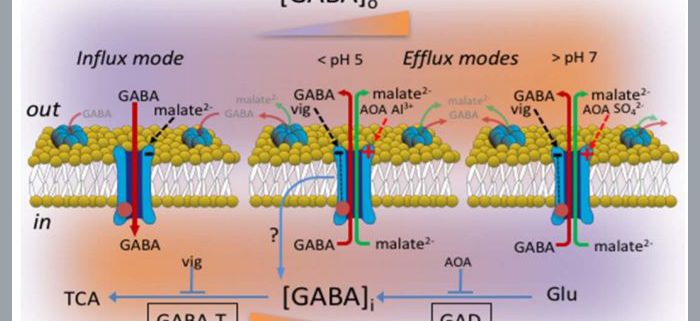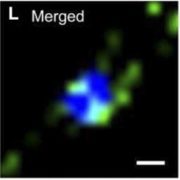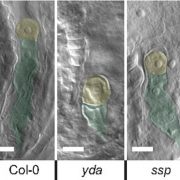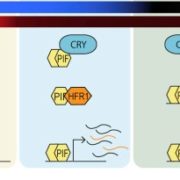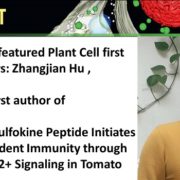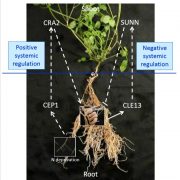A Malate-GABA Transporter and the Role of GABA in Plant Cells
Ramesh et al. discover a malate-GABA transporter that may play a role in signaling envioronmental condtions and metabolic status in plant cells. Plant Cell https://doi.org/10.1105/tpc.17.00864
Background: Gamma-aminobutyric acid (GABA) is a signaling molecule in mammalian nervous systems where it regulates specific channels that conduct chloride ions in the brain controlling mood. Plants rapidly accumulate GABA under several adverse conditions and a signaling role has been suggested. Certain proteins in plant cell membranes conduct negatively charged ions like chloride, and one family of these anion channels, the ALMTs, previously was shown to be sensitive to GABA. In acid soils with aluminum, roots of some wheat varieties exude the negatively charged compound malate via an ALMT (ALMT1), which confers aluminum tolerance. Interestingly GABA levels in these roots decrease in parallel with malate exudation.
Question: We wanted to know why and how GABA in wheat roots changes when the ALMT protein is activated. It was previously hypothesized that ALMT1 is regulated by GABA. We tested this by using compounds known to alter internal GABA levels in cells (some of which are used to treat human brain disorders).
Findings: We used wheat and barley seedlings, tobacco suspension cells, yeast cells and Xenopus (frog) oocytes expressing the wheat ALMT1 protein as well as other ALMTs. Expression of wheat ALMT1 reduced internal GABA levels by allowing GABA to come out of the cells along with malate. GABA could also be transported into yeast cells expressing ALMT1. A version of ALMT1 with mutations in the GABA binding site abolished the relationship between malate and GABA and prevented GABA transport by the protein. We concluded that the wheat ALMT1 protein is a malate-GABA transporter. The activation of ALMT1, and possibly others in the ALMT family, changes cellular GABA concentrations. Because GABA plays a central role in nitrogen and carbon metabolism as well as regulation of pH, the ALMT proteins may provide a means of communication of metabolic status between and within cells.
Next steps: We want to understand the role of GABA and malate exudation in signalling, and how the signal is propagated within and between cells. We also want to know why some drugs that influence GABA receptors in humans also work on plant ALMTs, despite very little similarity in protein structure.
Sunita A Ramesh, Muhammad Kamran, Wendy Sullivan, Larissa Chirkova, Mamoru Okamoto, Fien Degryse, Michael McLauchlin, Matthew Gilliham, and Stephen D Tyerman. (2018). The wheat aluminum activated malate transporter TaALMT1 and other ALMT family proteins facilitate GABA transport. Plant Cell May 2018, 30: 1147-1164; DOI: https://doi.org/10.1105/tpc.17.00864.


